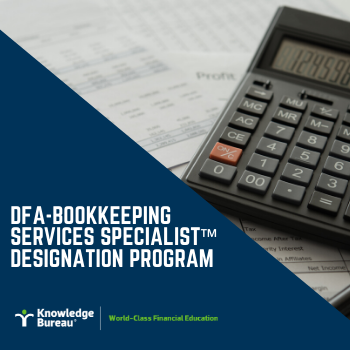Payroll Compliance Comes at a Big Cost: $12.5 Billion

Beth Graddon
The 2021 payroll formulas were released this week and it turns out Knowledge Bureau’s estimations of the official tax brackets were very accurate: a one dollar discrepancy has been noted on the information we reported to you earlier. However, statutory payroll costs are adding significantly to the burdens small business owners face, according to a new report, which also recommends that ancient tax-free benefits be indexed.
First to the new tax brackets for 2021:
|
2021 Brackets
|
2020 Rates
|
|
Up to $13,808
|
0
|
|
$13,809 to $49,020
|
15%
|
|
$49,021 to $98,040
|
20.5%
|
|
$98,041 to $151,978
|
26%
|
|
$151,979 to $216,511
|
29%
|
|
Over $216,511
|
33%
|
A new report from PwC Canada, commissioned by the Canadian Payroll Association, indicates that payroll costs and complexity are a significant obstacle to business innovation growth and expansion, particularly as the Canadian economy tries to recover from one of the worst economic downturns we’ve seen. Be part of the solution with new or enhanced credentials: our updated Advanced Payroll for Small Business course positions you to help.
The new PwC Canada report released on November 12 states that the annual cost of payroll compliance to Canadian employers is around $12.5 billion. Reducing these costs, with knowledgeable, professional help, and potential changes to payroll legislation, as proposed by the Canadian Payroll Association in the report, will help the economy recover from the pandemic and help companies invest in a more resilient economy.
Among the recommendations made in the report for change at the provincial and federal levels include:
- Simplifying the taxation system, starting with taxable benefits
- Harmonizing payroll policy
- Implementing a digital payroll system (that governments and agencies could access)
However, you can start helping businesses save time and money on payroll-related compliance today with knowledge earned by taking the Advanced Payroll of Small Business course. It goes without saying that bookkeepers must be able to produce accurate payroll on time, every time. This course takes the student even further by teaching completion of a full payroll cycle, compliance regulations and expectations, accounting for statutory and non-statutory deductions, taxable and non-taxable perks and benefits, and year-end preparation. All while providing you with an understanding of payroll changes that apply to all businesses within Sage 50 and QuickBooks Desktop and QuickBooks Online accounting programs. Use of the CRA Payroll Deductions Online Calculator (PDOC) will be used in the case studies.
Course Content:
Chapter 1 | The Role of the Payroll Department in a Digital World
Chapter 2 | Compliance Responsibilities: Remittances, Audits and Penalties
Chapter 3 | The Payroll Cycle and Its Components
Chapter 4 | Hiring Employees: Employment Standards, Contracts, Required Forms
Chapter 5 | Paying Employees: Compensation and Benefits
Chapter 6 | Paying Owner Managers: Salary, Benefits, Dividends, TOSI
Chapter 7 | Statutory Deductions: CPP, EI and Income Tax
Chapter 8 | Other Deductions
Chapter 9 | Taxable and Tax-Free Benefits
Chapter 10 | Termination and Severance
Chapter 11 | Year-End Reporting
The Advanced Payroll for Small Business course helps you become a more astute compliance manager that prepares accurate payroll, with an understanding federal and provincial employer requirements. Incorrect preparation costs employers a significant amount of money and can lead to ramifications with the CRA.

